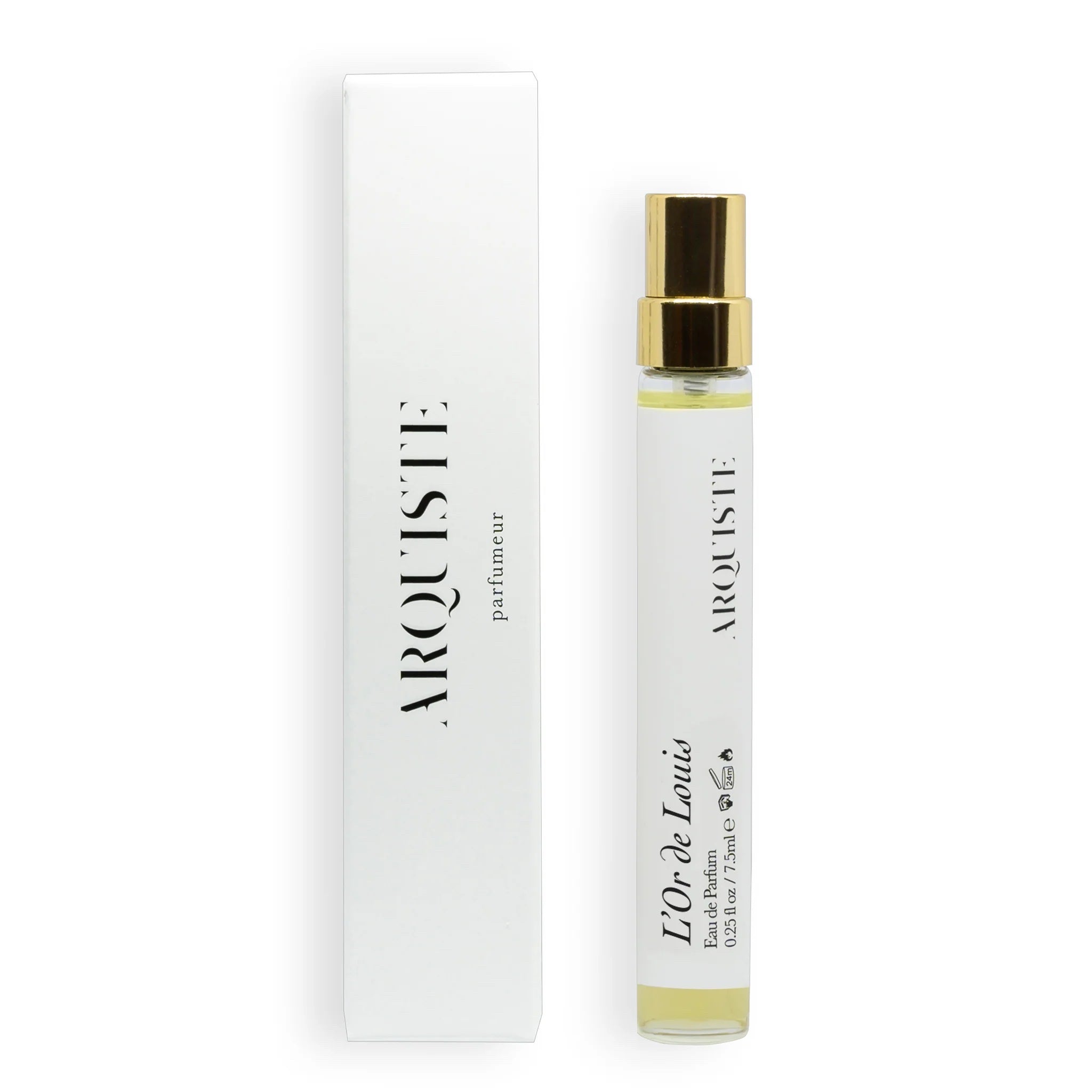
ARQUISTE Travel Spray L'OR DE LOUIS 7.5ml
Sold out
$69.00

An opulent, woody orange blossom composition including 24 karat gold.
April 1687,
The Orangery, Versailles.
More than a thousand Mediterranean trees are housed in the cathedral-like galleries of the Orangery. Built by the King’s architect to impress
courtiers, the tree-lined space became a theatrical setting to entertain the Court. Inside, the gardeners would build bonfires to keep the trees warm
so when the Sun King visited, the heady scent of firewood blended with his beloved orange blossoms would emit a generous golden aura.
Notes include:
Orange blossom absolute, pomegranate, cedar wood, honey, jasmine absolute, Florentine orris, musk accord, firewood smoke accord, cade wood and a ‘Oiselet de Chypre’ accord.
Developed with master perfumer Rodrigo Flores-Roux.
More Research
- Louis XIV was dubbed the ‘sweetest smelling monarch’. To satisfy his love of orange blossom he imported thousands of orange trees from Italy, Portugal and Spain and had his architect Jules Hardouin-Mansart expand the largest ever Orangery in Europe. During his reign, it was fashionable among nobles, to pay their court, to offer their own citrus and fruit trees to complement the King’s collection.
- A true genius of architecture, the name of Hardouin-Mansart is attached to the most grandiose achievements of the reign of Louis XIV. At Versailles, he designed among others the Hall of Mirrors, the North and South wings, the Cent-Marches staircases, the Royal Chapel, the Grand Trianon and of course the Orangery.
- The Orangery, by its monumentality and the purity of its lines, is one of the places where Hardouin- Mansart best asserted his talent as a great architect. Orange trees from Portugal, Spain or Italy, lemon trees, oleanders, palm trees and even pomegranate trees, have been protected for over 200 years within its monumental galleries.
- In fact, the Palace of Versailles has had an orangery since 1663, built by Louis Le Vau. The location chosen was excellent: facing south, it’s protected from the cold of the prevailing winds by its position under the Parterre du Midi. Twenty years later, Jules Hardouin-Mansart doubled the length of this first orangery, as well as its width, to make it the immense building preserved today. The central gallery is over 150 meters long and its vault culminates at 13 meters high. Two return galleries end under the monumental staircases of the Cent-Marches which play the role of buttresses to the whole. It was built under the ‘Italian model”, that is, in stone, with walls 4 to 5 meters thick, double glazing of the bays and a Southern exposure to maintain warmer temperatures even in winter.
- To preserve their scent throughout the year, the gardeners lit bonfires to keep the trees warm, mixing the warm scent of burning woods with the orange, lemon, and oleander blossoms’ fragrance. To enhance the ambience even further and amuse the Court, small bird-shaped ornaments known as Oiselets de Chypre, would be produced out of a fragrant paste and hung from tree branches.
- Another famous scented preparation was the Pommade de Florence, a popular concoction made of Florentine iris, fashionable with the French ladies and greatly appreciated by the King.
- Louis’ signature mixture, ‘Acqua Angeli’ (L’Eau d’Ange), consisted of a mixture of nutmeg, clove, and other resins boiled in rose water. Jasmine, orange blossom and a few grains of musk were added for his shirts to be rinsed in the sweetly scented water.

